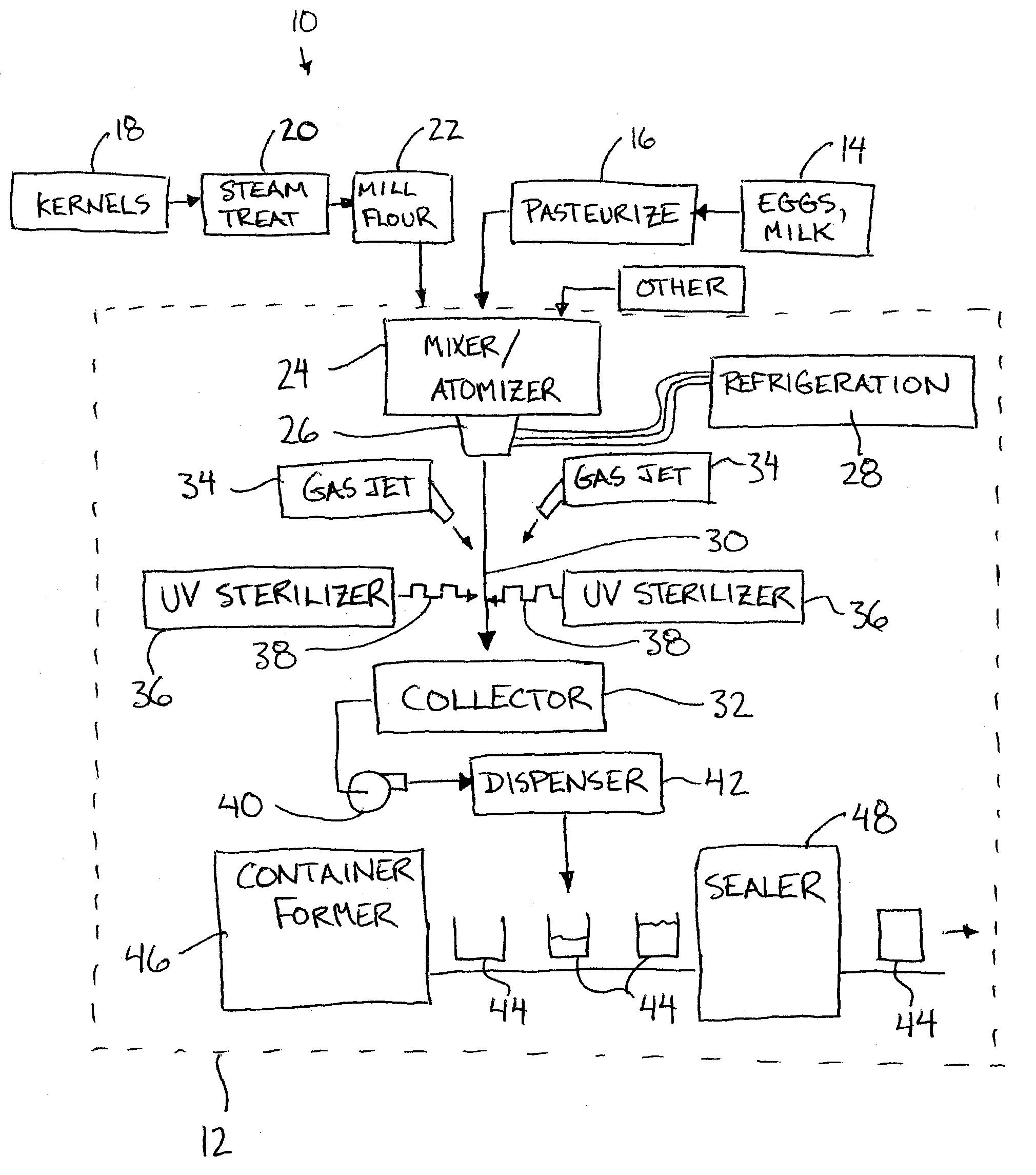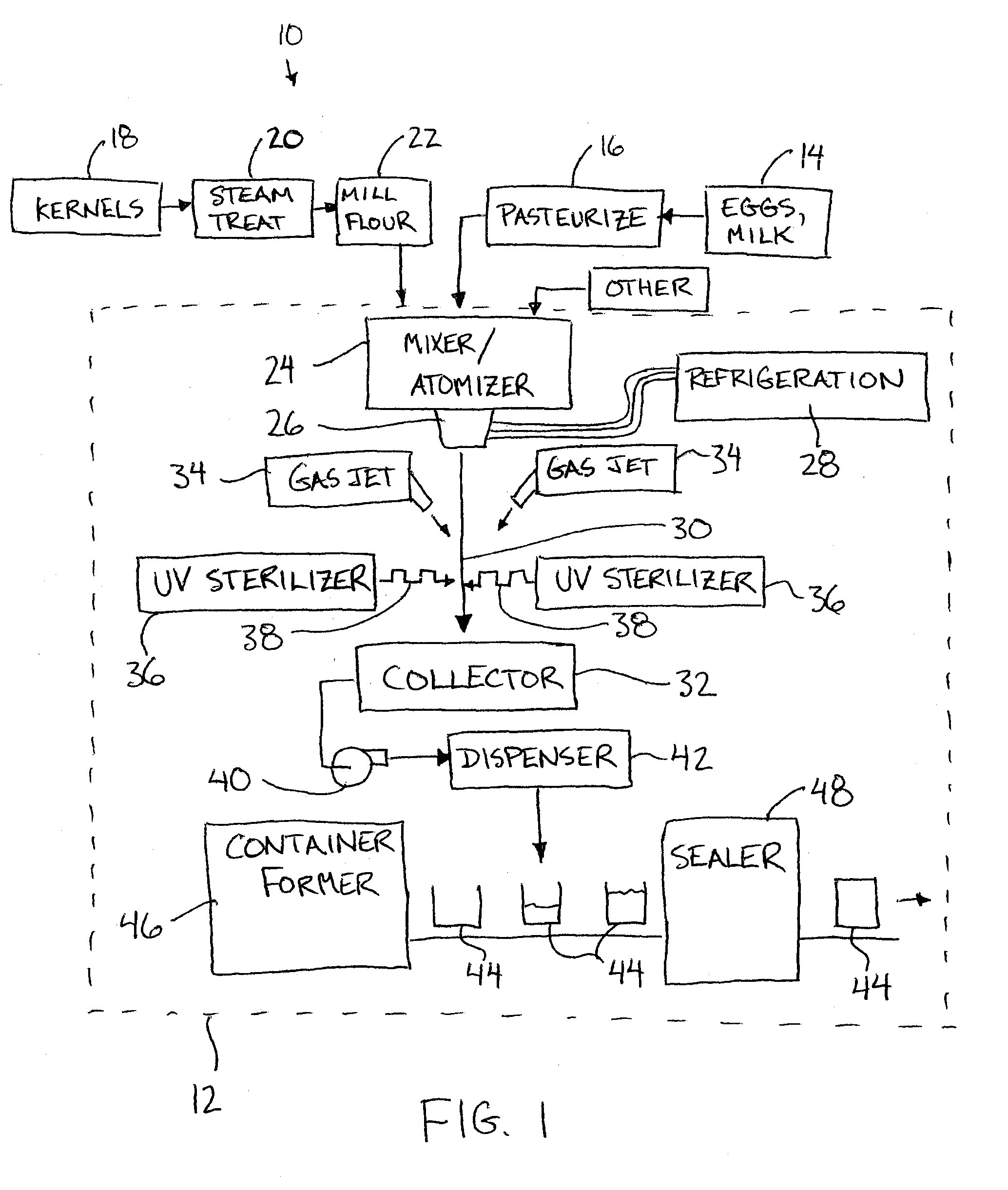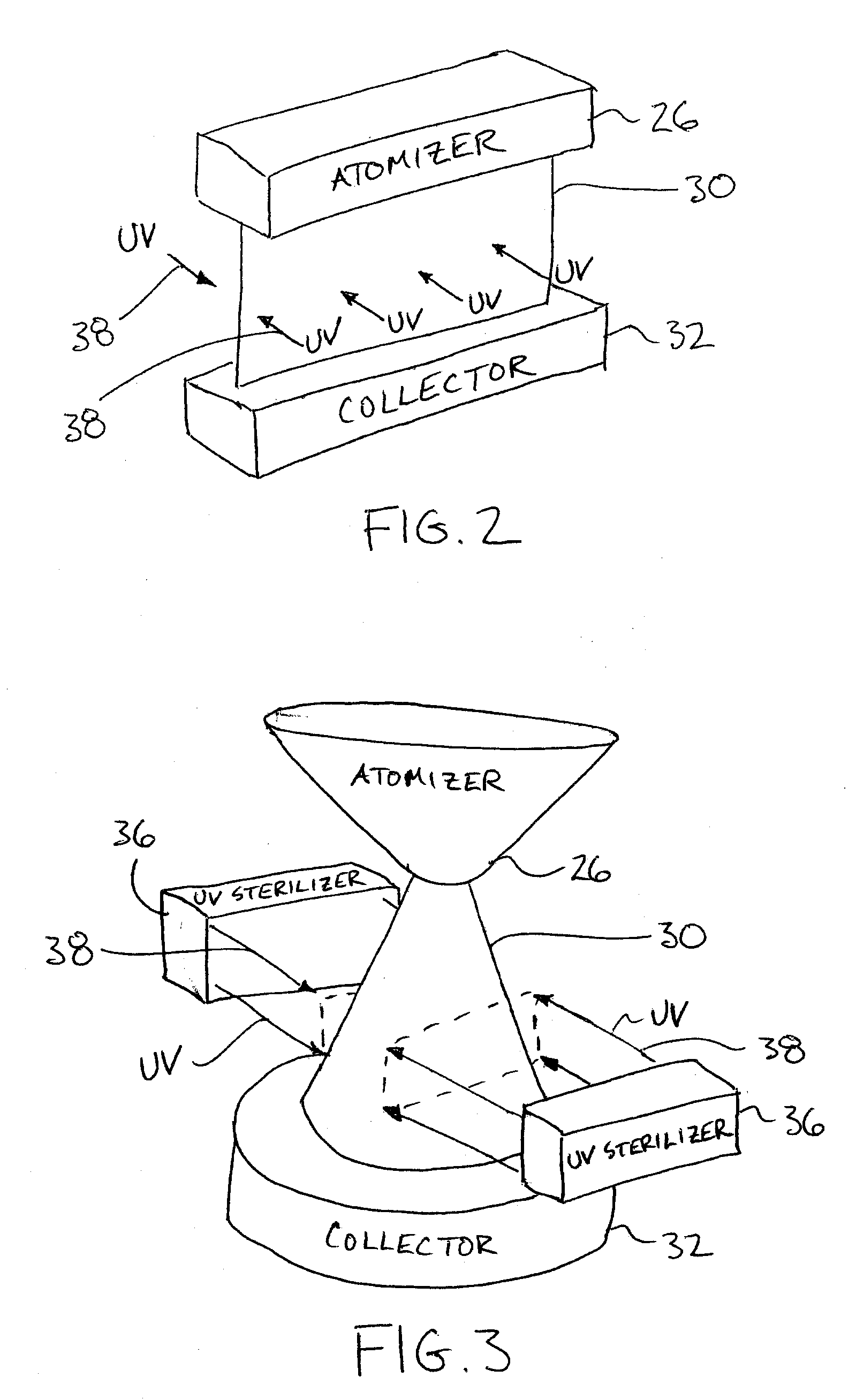System and Method for Producing a Packaged Batter
- Summary
- Abstract
- Description
- Claims
- Application Information
AI Technical Summary
Benefits of technology
Problems solved by technology
Method used
Image
Examples
Embodiment Construction
[0033]Referring to the accompanying figures there is illustrated a system for producing a packaged batter generally indicated by reference numeral 10. The system is particularly useful for producing a packaged batter in which the batter is sterilized and is maintained in a substantially sterilized condition during packaging.
[0034]The system 10 includes a sterile environment 12 where a substantial majority of the process is carried out. The ingredients of the batter are typically pre-treated at a separate location prior to their use in the sterile environment 12 within which the majority of the process according to the present invention is carried out. Fluid ingredients 14 including milk and eggs and the like are pasteurized 16 prior to being mixed with other ingredients to form the batter. The flour in the batter is also pre-treated by subjecting the kernels 18 to a steam treatment 20 prior to milling 22 so that the resulting flour comprises a low micro-organism load flour in which ...
PUM
 Login to View More
Login to View More Abstract
Description
Claims
Application Information
 Login to View More
Login to View More - R&D
- Intellectual Property
- Life Sciences
- Materials
- Tech Scout
- Unparalleled Data Quality
- Higher Quality Content
- 60% Fewer Hallucinations
Browse by: Latest US Patents, China's latest patents, Technical Efficacy Thesaurus, Application Domain, Technology Topic, Popular Technical Reports.
© 2025 PatSnap. All rights reserved.Legal|Privacy policy|Modern Slavery Act Transparency Statement|Sitemap|About US| Contact US: help@patsnap.com



